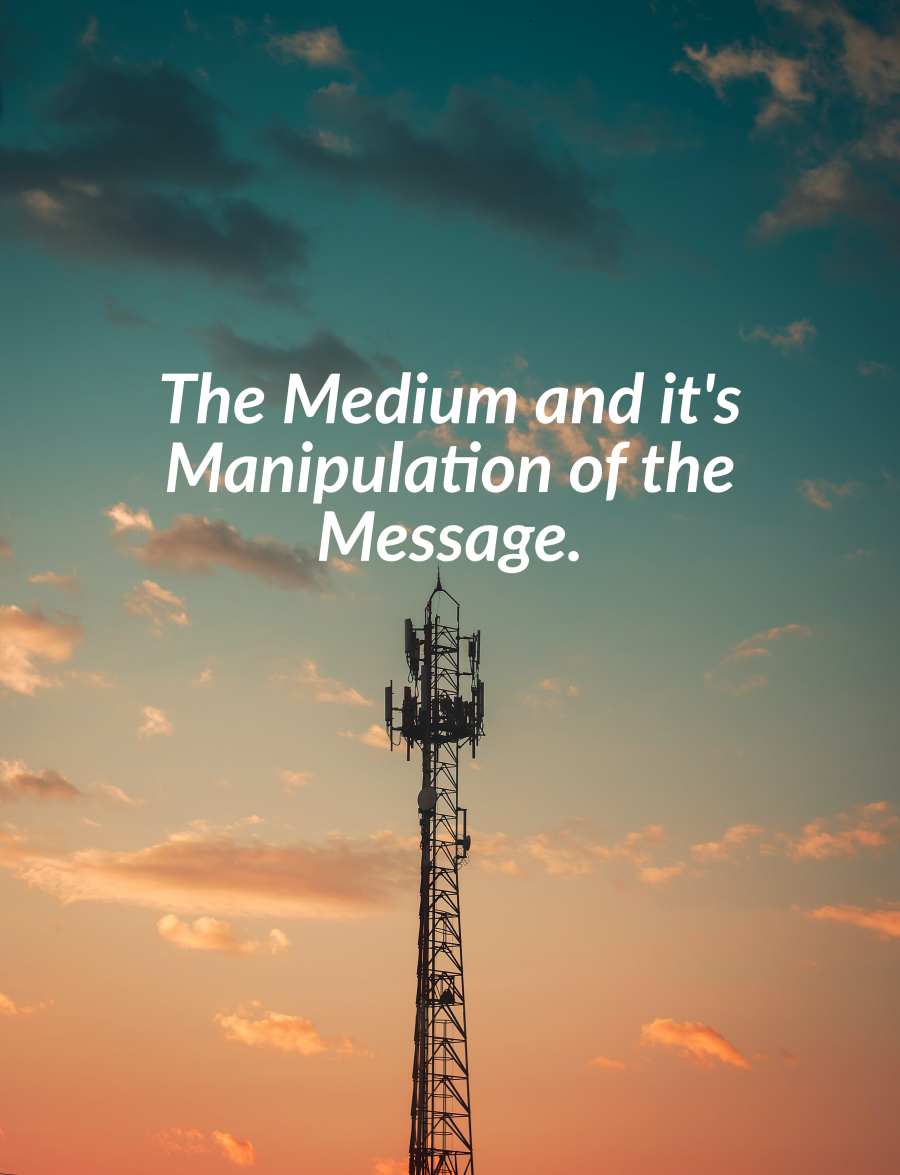Media is ever present in our modern society, whether it be News, Television, Radio or Social Media. They may seem independent of each other, however, they share a common trait, they are a medium for relaying information. But have you ever thought about how a medium affects your interpretation of the message?
Media Theorist Marshal McLuhan studied the idea of the medium being more important than the message itself in conveying meaning to an audience. He built upon earlier work by theorist Harold Innis’s theory of “Bias of communication” whose work stated that “Typical uses of bias today focus on the spatial or temporal orientations” Comor (2021).
Innis had the idea that there are two forms of Media, Time-Based, made of durable materials such as stone and Space-Based mediums, made from portable materials such as paper. The durability of time-based materials created stability and allowed for small societies to develop, whilst space-based media allowed for the development of empires that were more susceptible to change.
McLuhan builds upon this Idea with the statement “Whether the light is being used for brain surgery or night baseball is a matter of indifference” and that “they could not exist without the electric light. This fact merely underlines the point that “the medium is the message“ ” Durham (2006). Here McLuhan states that the things described both rely on light to function, therefore they are products of the medium that allows for them.
Let’s Apply McLuhan’s ideas to a Guardian Article regarding the FTX crypto scandal both on Twitter (Now called X) and their website.
The Guardian’s Social Media post is very straight to the point with its headline, it explicitly summarises the story in a line that makes it easy to understand which is important on such a fast-paced platform with hundreds of competing news outlets. It’s informative but it is lacking in its perceived importance as it requires little engagement to comprehend. It’s spoon-fed information which somewhat downplays the importance of the story due to the more informal nature of Social Media platforms for sharing news.

By comparison, The same article on the Guardian’s website is far more informative. Whilst it uses the same headline, the space just below it is occupied by a quote from a source. This allows it to be perceived as more important due to the cleverly structured layout making use of a quote that in the mind of the reader legitimizes and adds credibility to the story. If we combine this with the fact that the story requires active participation to understand the gist of the story, it makes it seem more important as you have spent more time trying to process the provided information, therefore you are more engaged with it.
This clearly outlines the idea that McLuhan describes regarding the idea that the medium affects the way that a message is perceived by the audience, especially his ideas of “Hot and Cold” media. Hot media requires little engagement to understand and Cold media is the opposite. These two articles may be the same but the format they are presented in (Hot for Social Media and Cold for their website) affects the perception of the information significantly.
Reference list:
Bekiempis, V. and Montgomery, B. (2023). Sam Bankman-Fried found guilty of defrauding FTX customers out of billions. The Guardian, 3 November. Available from https://www.theguardian.com/business/2023/nov/02/sam-bankman-guilty-ftx-alameda?CMP=twt_gu#Echobox=1698975162 [Accessed 5 November 2023].
Comor, E.A. (2021). Harold Innis’s Concept of Bias: Its Intellectual Origins and Misused Legacy. Oxford Research Communication. Available from https://doi.org/10.1093/acrefore/9780190228613.013.962.
Durham, M.G. (2006). Media and cultural studies: keyworks. WileyBlackwell.
Photo by Vanderlei Longo from Pexels: https://www.pexels.com/photo/silhouette-photography-of-steel-tower-2081132/


You effectively set the stage by highlighting the topic of media’s impact on message interpretation and introducing McLuhan’s theory. You provide good background information on Innis’s bias of communication and McLuhan’s “medium is the message” concept, making the analysis more meaningful. Comparing the Guardian’s article presentation on Twitter and their website effectively demonstrates McLuhan’s ideas in practice. Overall its very well constructed.